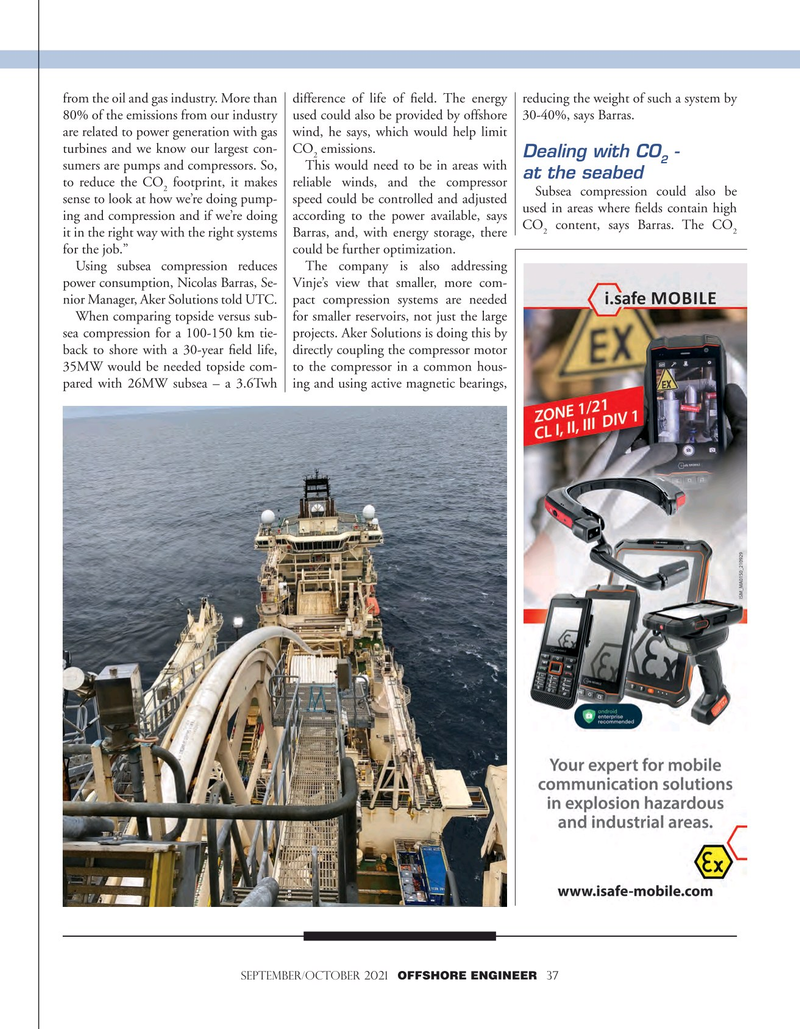
Page 37: of Offshore Engineer Magazine (Sep/Oct 2021)
Digital Transformation
Read this page in Pdf, Flash or Html5 edition of Sep/Oct 2021 Offshore Engineer Magazine
from the oil and gas industry. More than difference of life of feld. The energy reducing the weight of such a system by 80% of the emissions from our industry used could also be provided by offshore 30-40%, says Barras. are related to power generation with gas wind, he says, which would help limit turbines and we know our largest con- CO emissions.
Dealing with CO - 2 2 sumers are pumps and compressors. So, This would need to be in areas with at the seabed to reduce the CO footprint, it makes reliable winds, and the compressor 2
Subsea compression could also be sense to look at how we’re doing pump- speed could be controlled and adjusted ing and compression and if we’re doing according to the power available, says used in areas where felds contain high 2 2 it in the right way with the right systems Barras, and, with energy storage, there CO content, says Barras. The CO for the job.” could be further optimization.
Using subsea compression reduces The company is also addressing power consumption, Nicolas Barras, Se- Vinje’s view that smaller, more com- nior Manager, Aker Solutions told UTC. pact compression systems are needed
When comparing topside versus sub- for smaller reservoirs, not just the large sea compression for a 100-150 km tie- projects. Aker Solutions is doing this by back to shore with a 30-year feld life, directly coupling the compressor motor 35MW would be needed topside com- to the compressor in a common hous- pared with 26MW subsea – a 3.6Twh ing and using active magnetic bearings, september/october 2021 OFFSHORE ENGINEER 37

 36
36

 38
38